- The Slitting Cutter
- Adjustable Clapboard (Siding) Marker (1897 Strelinger catalog, page 799)
- Stanley Clapboard Siding Marker patent
|
In this post I will describe more marking gauges and related tools from the Tison Tool Barn collection. First is this combination marking gauge. One side of the bar has a single scratch pin for use as a standard marking gauge.. The opposite side of the bar has two scratch pins for use as a mortice marking gauge. The movable scratch pin is adjusted by turning the thumb screw on the end of the bar. One side of the bar of the this gauge has what I thought was a name stamped into it. After applying chalk and carefully examining the mark, I realized that it was a series of depressions in the wood formed by the thumb screw used to hold the fence in place. It therefore appears that at some point the fence was removed from the bar and reinstalled "upside down." The Tison Tool Barn collection includes a couple of slitting cutters. These tools allowed a woodworker to cut strips of thin wood of uniform width. They look like marking gauges, but have a knife blade instead of a scratch pin. The worker would butt the fence up to the edge of the board and draw the cutter along the board. This action could be repeated as necessary until the board was cut through. First is this slitting cutter which is 15-1/4 inches long and can cut a strip up to 10-1/2 inches wide. The wide handle on end with the knife blade helped the woodworker to apply pressure to the knife tip as it passed along the wood. The second slitting cutter in the Tison Tool Barn looks like a simple marking gauge, but it has a knife blade instead of a scratch pin. It is 10 inches long, and can cut a strip up to 9 inches wide. The last tool from the Tison Tool Barn covered in this post is a clapboard siding marker. This tool is used to scribe a line across a clapboard to mark where the board is to be cut. The toothed blade seen in the photo below is adjustable and can be set to the depth desired for the scratch mark. The clapboard is butted up against the end of another board already mounted to the structure, and laid flat on the the vertical edge board at the corner of the structure. The gauge is held over the board so that the projections at the end are against the edge board, and is then moved up and down to scratch a line on the board. Cutting the board on the the scratch line creates a tight fit for the clapboard. This is a Stanley Model 88 clapboard marking gauge. It was patented in 1886, and manufactured by Stanley for more than 75 years. Shown below is the manufacturer's mark on this tool. As often happens, the stamp on the tool is imperfect. In particular, the 'P' in 'PAT.' is missing, and the year looks like '83'. Careful inspection at high magnification shows no sign that the 'P' was ever present, while the last number of the year can be seen to be a '6' with the left half of the number missing. I have used up my buffer of posts for this blog, so I am not sure now what the next post will be about. I am heading back to the Tison Tool Barn to take more photos, and then search the web so I can find something to say about the tools. Sources:
0 Comments
A further note about monkey wrenches: Last week I was made aware of a blog entry on the etymology of "monkey wrench" which appeared after I started my series of blog entries on monkey wrenches in the Tison Tool Barn on September 2, 2015. "Charles Monk, Monkey Wrenches and a 'Monkey on a Stick' - a Gripping History and Etymology of 'Monkey Wrench'". And now a look at marking gauges in the Tison Tool Barn. A marking gauge is a device for marking a cutting line on wood or other materials. The gauge consists of a beam and a fence, through which the beam passes. The fence may be fixed to the beam by a set screw or a wedge. The beam has a scratch pin or other marker set near one end of the beam. The fence is set so that the distance from the inner surface of the fence to the scratch pin equals the desired width of the board or panel. The fence is held against the edge of the wood, and the marking gauge is pushed along the wood, leaving a scratch mark to guide the cut. The Tison Tool Barn has two standard or single-pin marking gauges in its collection. Both are recent acquisitions. First is this marking gauge that was donated by Robert Sherman last February. It has an inch-scale printed on the beam. "FRED STROUT.", which is likely an owner's mark, is stamped on one side. Another single-pin marking gauge was in a tool box donated to the Matheson History Museum in October of this year. It is probably beech and has an inch-scale printed on the beam. It is marked "STANLEY NO. 61 MADE IN U.S.A." A mortise gauge is a marking gauge with a short beam and two scratch pins. One of the scratch pins on a mortise gauge can be moved, making the distance between the pins adjustable. A mortise gauge is used for marking mortises, rectangular holes in wood, into which matching tenons are inserted. Mortise and tenon joints are used in furniture and cabinets, and were formerly used in post and beam construction. The Tison Tool Barn collection includes several mortise gauges. This 6 inch long mortise gauge is made from rosewood and brass. It has a fixed scratch pin near the end of the beam, and a movable scratch pin between the fixed pin and the fence. The movable scratch pin is adjusted by turning the thumb screw at the far end of the beam. The fence is held in a desired position by the screw on top of the fence. The next mortise gauge has a brass bar, and a fence composed of a dense black material with a brass plate on one face. The gauge is labeled in the museum display as being walnut and brass, but I cannot see any grain in the black material, and I believe it is some man-made material. The movable pin is held in place by a set screw. The name "G. F. OWEN" is stamped on several places on the fence. The mortise gauge below is made from boxwood and brass. The bar is 7 inches long, not including the thumb screw. There is an inch-scale marked on the bar. The movable scratch pi is adjusted by turning the thumb screw on the end of the bar. The bar is marked "* H. CHAPIN * * UNION-FACTORY. * * WARRENTED BOX WOOD. *" H. Chapin manufactured tools in Connecticut from 1828 until 1860, when the firm became H. Chapin & Sons. Another marking gauge in the Tison Tool Barn collection is this Stanley #74 double bar marking gauge. It has two bars, 8-1/4 inches long, that can be adjusted individually. Each bar is held in position in the fence by its own thumb screw. This tool can be used as a standard marking gauge by using one of the bars. A mortise can be marked by setting one bar to the distance for one edge of the mortise, and the other bar to the other edge. This requires two passes with the marking gauge, flipping it over between passes. I'll finish describing the marking gauges from the Tison Tool Barn in my next post.
|
AuthorI have been a volunteer at the Matheson History Museum. Feeling an affinity with old hand tools (some of which I remember from my youth), I have tried to learn more about the history of the tools in the Tison Tool Barn, and how they were used. All text and photographs by Donald Albury in this blog are licensed under a Creative Commons Attribution-ShareAlike 4.0 International License. All illustrations taken from Wikimedia Commons are either in the public domain, or have been released under a Creative Commons license.
Archives
December 2015
Categories
All
Interesting Sites about Old Tools |


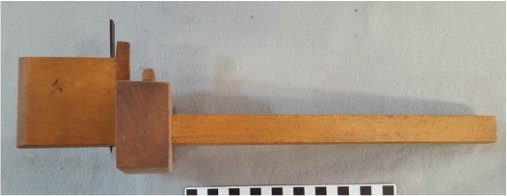
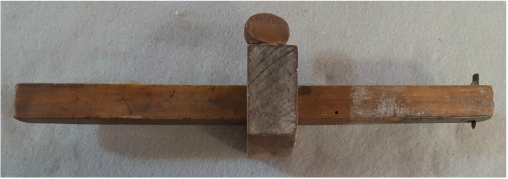
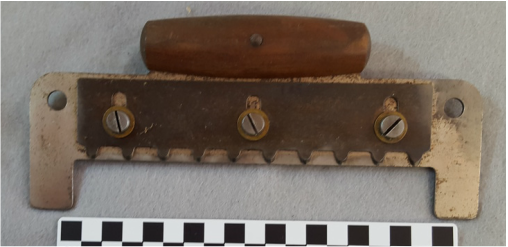
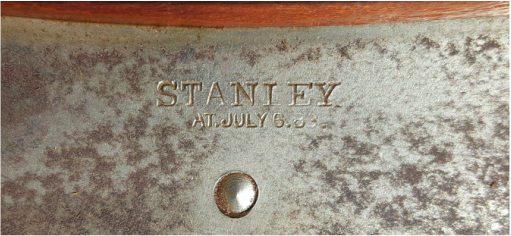
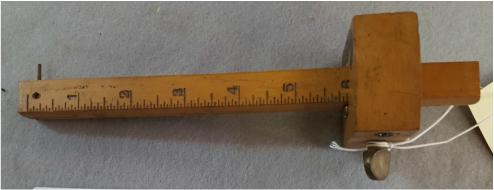
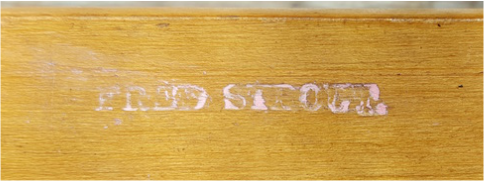
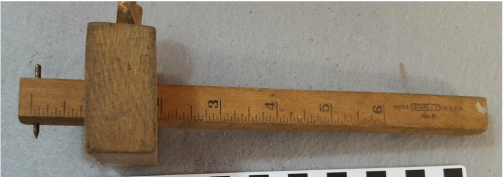
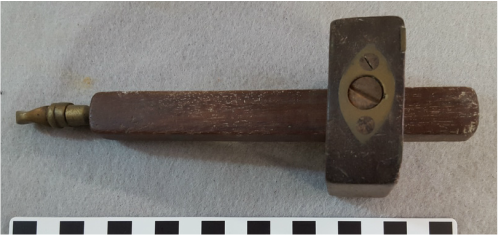
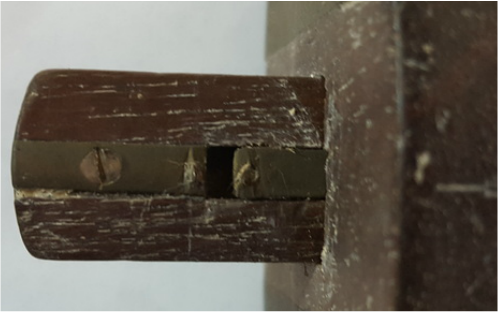
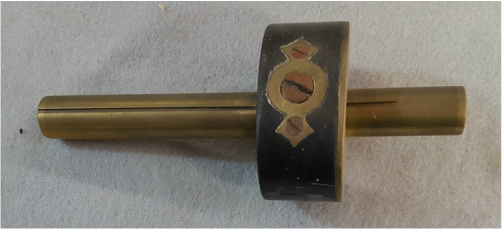
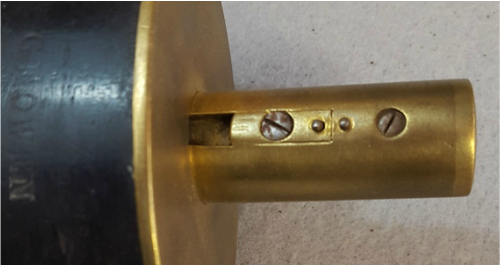
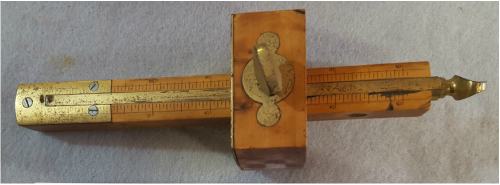
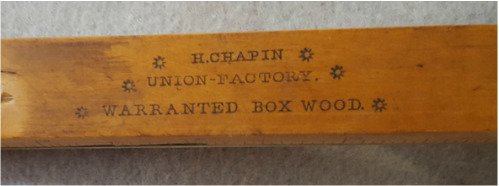
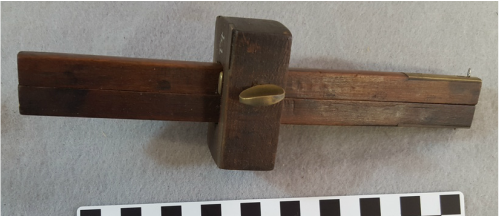
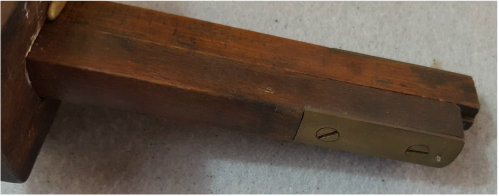
 RSS Feed
RSS Feed
